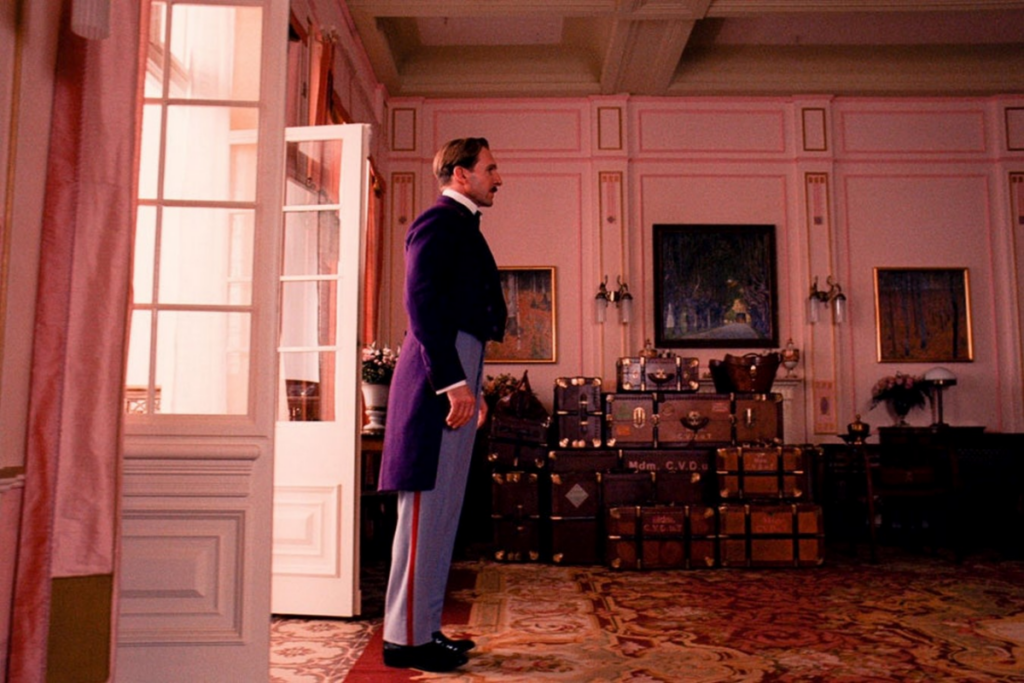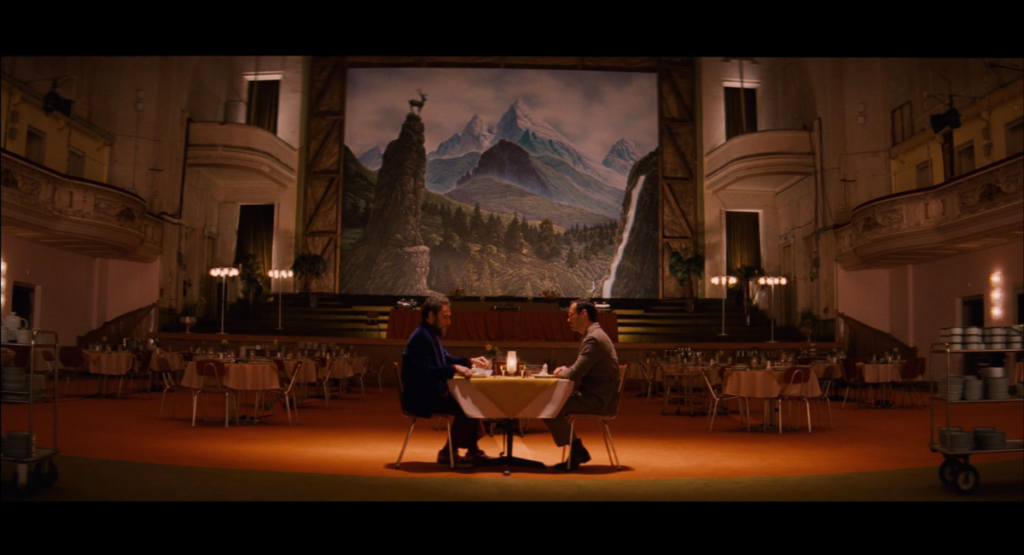Beyond what was contained in the narrative of Zero Moustafa, The Grand Budapest Hotel conveys subliminal motifs through deliberate patterns in staging and framing. The frequent display of the Steadicam shot combined with central framing gives off a strong sense of organization and direction, while the alluring background of the hotel and the varying color pallets displayed on screen provides context to what certain locations are supposed to represent. For example, shots involving the Grand Budapest Hotel are vibrant and visually appealing because Zero regards it with much significance. Additionally, Gustav’s vernacular compliments the decorous nature of the film, but it is comedically juxtaposed with the frequent use of vulgar language, reminding the viewer of the story’s imperfect nature.

Similarly, the use of camera techniques provides insight into what element on screen is meant to draw the most attention, utilizing wide shots to boast the aesthetic mise-en-scene, and zoom-ins to shift the attention onto character dialogue. Overall, these elements allow the story to be viewed as a curated work, and this is explicitly pointed out in the introduction and ending sequence– a reminder that the entire movie is a mere visual depiction of what is being read by the character in the opening sequence.
